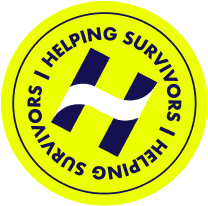Human Trafficking

"*" indicates required fields

Author: Kathryn Kosmides
Survivor Advocate
Key Takeaways
- Human trafficking, including sex trafficking, often involves subtle and psychological coercion rather than outright abduction, making it difficult to recognize and stop. Oftentimes, the victim has some sort of relationship with their trafficker, whether they are family, a romantic relationship, or an employer.
- Traffickers typically prey on marginalized groups such as impoverished individuals, migrant laborers, and those addicted to drugs or alcohol. While an individual can be randomly abducted and forced into sex trafficking, it is much more likely they were a target and/or someone in their life is the trafficker.
- Efforts to combat human trafficking include government actions like the Trafficking Victims Protection Act, as well as initiatives by organizations like the Polaris Project and Anti-Slavery International. Additionally, many survivors are working with expert law firms to file hotel sex trafficking lawsuits, to hold them accountable for their role in enabling this horrific crime.
While human trafficking may involve outright abduction, it may also be more covert and psychological. Often, victims of commercial sex trafficking are groomed and deceived for a long period before being coerced into sex work.
Human trafficking is nuanced and depends on each victim’s identity and situation. Learn how to better identify trafficking within your community and what to do if traffickers have victimized you or a loved one.
What is Human Trafficking?
According to the U.S. Department of Justice, human trafficking involves “compelling or coercing a person to provide labor or services, or to engage in commercial sex acts.” In human trafficking cases, the coercion can be physical or overt but is often more subtle or psychological. Involving a minor in commercial sex work is always classified as human trafficking regardless of whether the perpetrator used force or coercion.
Migrant smuggling is a related crime in which offenders facilitate the irregular entry of migrants into a country for financial or material gain. Victims of migrant smuggling are often subject to arduous, life-threatening traveling conditions, abuse, and in some cases, sexual extortion. In addition, they may be trafficked once arriving in the new country.
According to United States law, both forced labor and sex trafficking fall under the umbrella term of human trafficking. U.S. and global authorities, such as the United Nations, identify trafficking based on three core elements:
- Act: recruiting, transporting, transferring, harboring, or receiving victims
- Means: using methods such as threats or force, coercion, fraud, deception, abuse of a victim’s vulnerable position, abduction, and giving or offering the victim payment or non-financial benefits
- Purpose: exploiting a victim to do forced work or commercial sex work
Globally, there were 51,580 detected victims of human trafficking in 2020. Experts strongly suspect the actual trafficking numbers are much higher than reported, as it is a crime dependent on deception, secrecy, and threats. In North America, reported victims are mainly women and girls trafficked for sexual exploitation.
Where Does Human Trafficking Happen?
Human trafficking can occur behind closed doors or in public spaces. It can involve relocation, but it also can occur within the victim’s community.
Trafficking victims usually know and trust their trafficker before the offense. A trafficker may be their victim’s family member, friend, spouse, intimate partner, benefactor, business acquaintance, or boss.
For many vulnerable populations, perpetrators can use debt or the promises of safety and housing to coerce victims into moving or migrating for risky job offers they otherwise wouldn’t consider. After arriving, these victims either discover that the traffickers’ promises were lies or that job conditions are much worse than described. They find themselves trapped and fully reliant on their captors for their physical safety and financial needs.
Once trafficked, victims may be forced into domestic servitude or compelled to work in public-facing spaces such as traveling sales, restaurants, hotels, nail and hair salons, massage parlors, factories, farms, construction sites, fairs and carnivals, churches, or care facilities. They may also be forced to work in an illegal trade, such as selling and distributing drugs or commercial sex work.
What Are the Risk Factors for Human Trafficking?
While human trafficking can occur to anyone, traffickers often prey on more vulnerable or marginalized groups, such as the following:
- Impoverished or unhoused people
- Those without a lawful immigration status
- Migrant laborers
- Children in the child welfare or juvenile justice systems
- Runaways and homeless youth populations
- Unaccompanied minors
- People of color
- Individuals who identify under any sexuality other than straight
- People living with physical disabilities or mental disorders
- People suffering from substance abuse
Warning Signs of Human Trafficking
Unfortunately, recognizing that a stranger is a trafficking victim is difficult. In the vast majority of cases, no visible indicators suggest a person was trafficked.
Focusing your attention on the people you know and see regularly is a much more valuable way to help identify and stop trafficking within your community and network.
Labor Trafficking Signs
- A person is mostly isolated from the rest of the world alongside co-workers.
- A person lives in illegal, dangerous, inhumane, or overcrowded conditions, which may include other co-workers.
- A person works in illegal or dangerous conditions without proper breaks or safety protections.
- A person owes a debt to their employer.
- A person is not paid what they are owed or promised for work.
- A person alludes to wanting to leave their job but feeling pressure not to.
- A person does not possess identifying documents such as a passport or driver’s license.
- A person shows signs of being watched while talking or interacting with you.
- A person has alluded to being threatened with force or deportation by their boss.
Sex Trafficking Signs
- A person confides or seems that they want to stop sex work but feel scared or trapped.
- A person discloses that they did not initially want to perform sex work but was pressured or encouraged to do it.
- A person has a pimp or manager controlling their sex work.
- A person works where it may be common to be pressured into sex work, such as a strip club, go-go bar, cantina, or illicit massage parlor.
- A person either lives where they perform sex work or is transported by guards from their home to their workplace.
- A child is living with or supported by a parent or other adult who is abusive or engages in behaviors related to substance abuse.
- A person has an older and seemingly controlling parent, family member, romantic partner, friend, or “sponsor” who monitors and controls their communications and interactions with others, paycheck and spending, and other aspects of their daily life.
Combating Human Trafficking
How the Government Combats Human Trafficking
In the U.S., the Trafficking Victims Protection Act of 2000 sets the groundwork for reducing human trafficking. The 2019 reauthorization of the act focused on the following actions:
- Reduce the demand for commercial sex: ending government partnerships with the commercial sex industry
- Support federal agency programs, mandates, and authorities: improving victim protection training for federal agents, providing direct services to child victims of human trafficking, and awarding grants for public awareness efforts in schools
- Improve victim services: substantially increasing funding for victims services, enhancing opportunities for survivors seeking restitution or financial supplements, implementing a victim-centered approach to human trafficking in law enforcement
- Reduce sexual exploitation crimes: combating sex tourism, extending Megan’s Law—which limits known pedophiles’ ability to travel—internationally, and improving support for missing and exploited children
- Reduce forced child labor crimes: calling on the President to set best practices for combating trafficking related to child labor and improving reporting on certain child labor and commercial sex crimes in federal databases
- Change criminal laws and penalties: enhancing penalties for human trafficking, child exploitation, and repeat offenders
How Organizations Combat Human Trafficking
Outside the government, the Polaris Project runs the National Human Trafficking Hotline and provides educational information and training courses to help recognize and reduce human trafficking in the United States. On a global scale, Anti-Slavery International provides research and advocacy around trafficking, especially in the UK, supports migrant workers in high-trafficking areas, and conducts in-depth investigations into popular trafficking routes.
How Everyone Can Combat Human Trafficking
If you suspect human trafficking, text 223733 or call 1-800-373-7888. If you or someone you know is in immediate danger, call 911.
Keep a look out for the potential signs of forced labor or sex trafficking among your friends, acquaintances, and members of your community. Arm yourself with information by accessing resources and courses from trusted sources such as the Polaris Project, the Department of Justice and State Department, and Anti-Slavery International. Donate to related charities and find ways to take action in your community from anti-human trafficking organizations.

What to Do When You or Someone You Love is a Victim of Human Trafficking
If you or a loved one may be experiencing human trafficking, call 911 for emergencies. For less urgent situations such as suspected grooming, use the National Human Trafficking Hotline by texting 223733, calling 1-800-373-7888, or chatting online. If you are seeking restitution or legal recourse as a victim of trafficking, hiring a lawyer is a good first step to exploring all options available.
At Helping Survivors, we aim to support victims with knowledge and resources about their options for taking legal action. Contact our team and share your story for empathetic, expert advice on how you can move forward after surviving abuse or exploitation
Want To Speak With A Lawyer?





